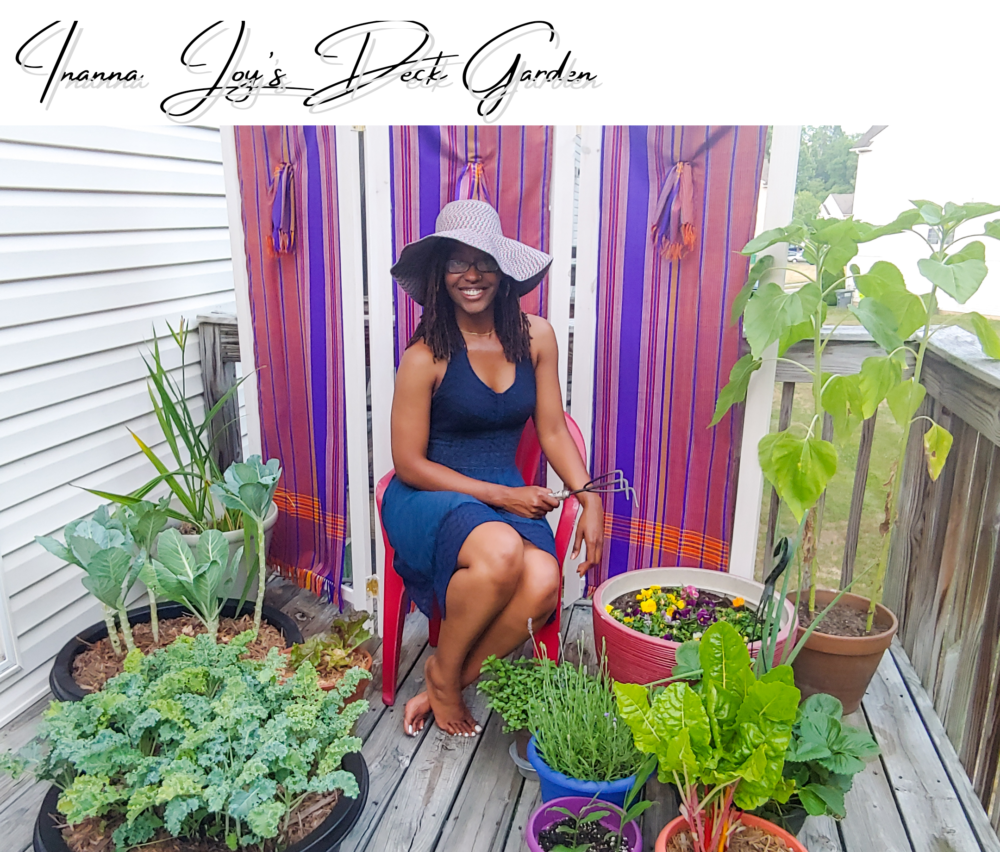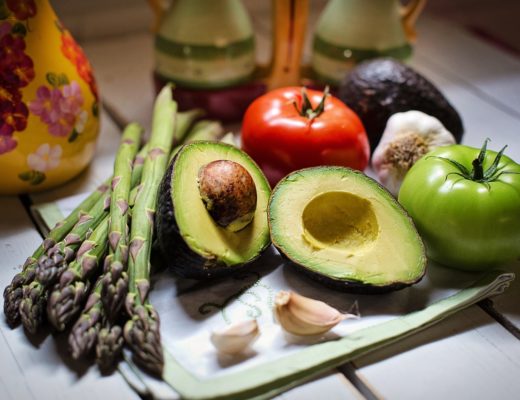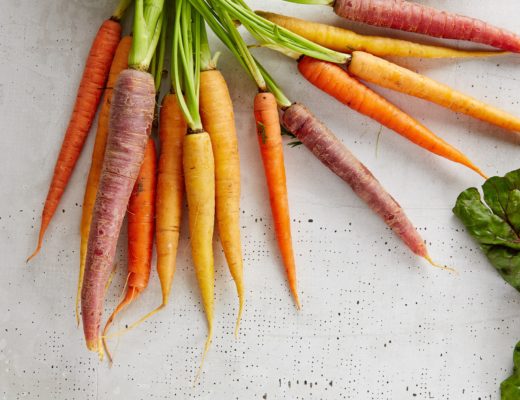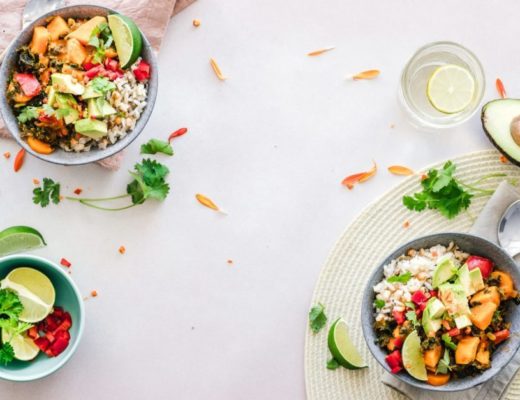I tried for years. A small bed of lettuce here, a grapevine ravaged by ants there, a few forgotten corn stalks here, a neglected and desperately thirsty collard plant there. The yard was my canvas. I just dove in and tried whatever I wanted. I got lazy. I got busy with work and family. I figured I’d get back to gardening in the right time.
Well, this year was the perfect time for success. I now live in a new place with less yard space (Hallelujah! No grass to cut!), so I decided to try container gardening on my deck. The sheer convenience of it makes for a winning formula.
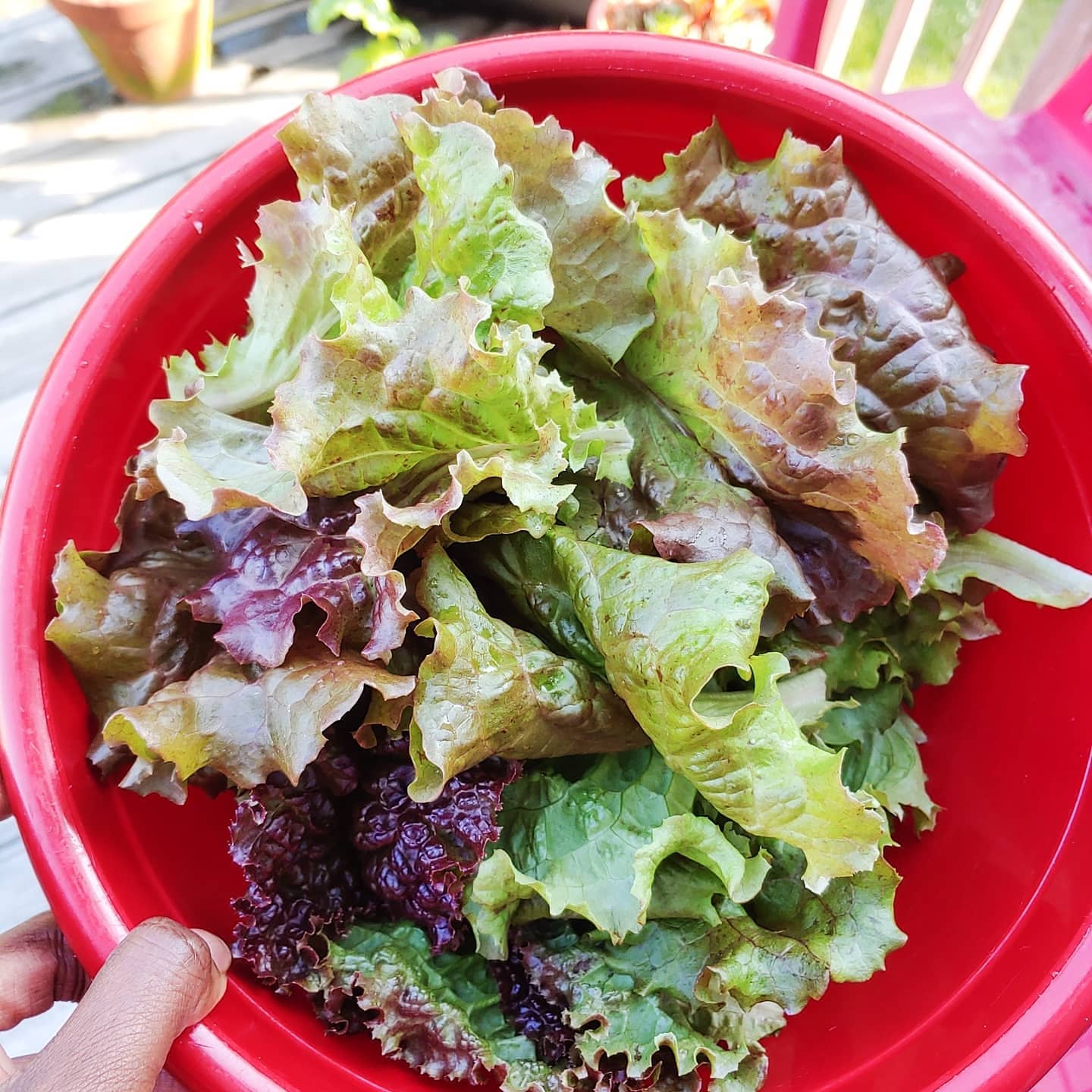
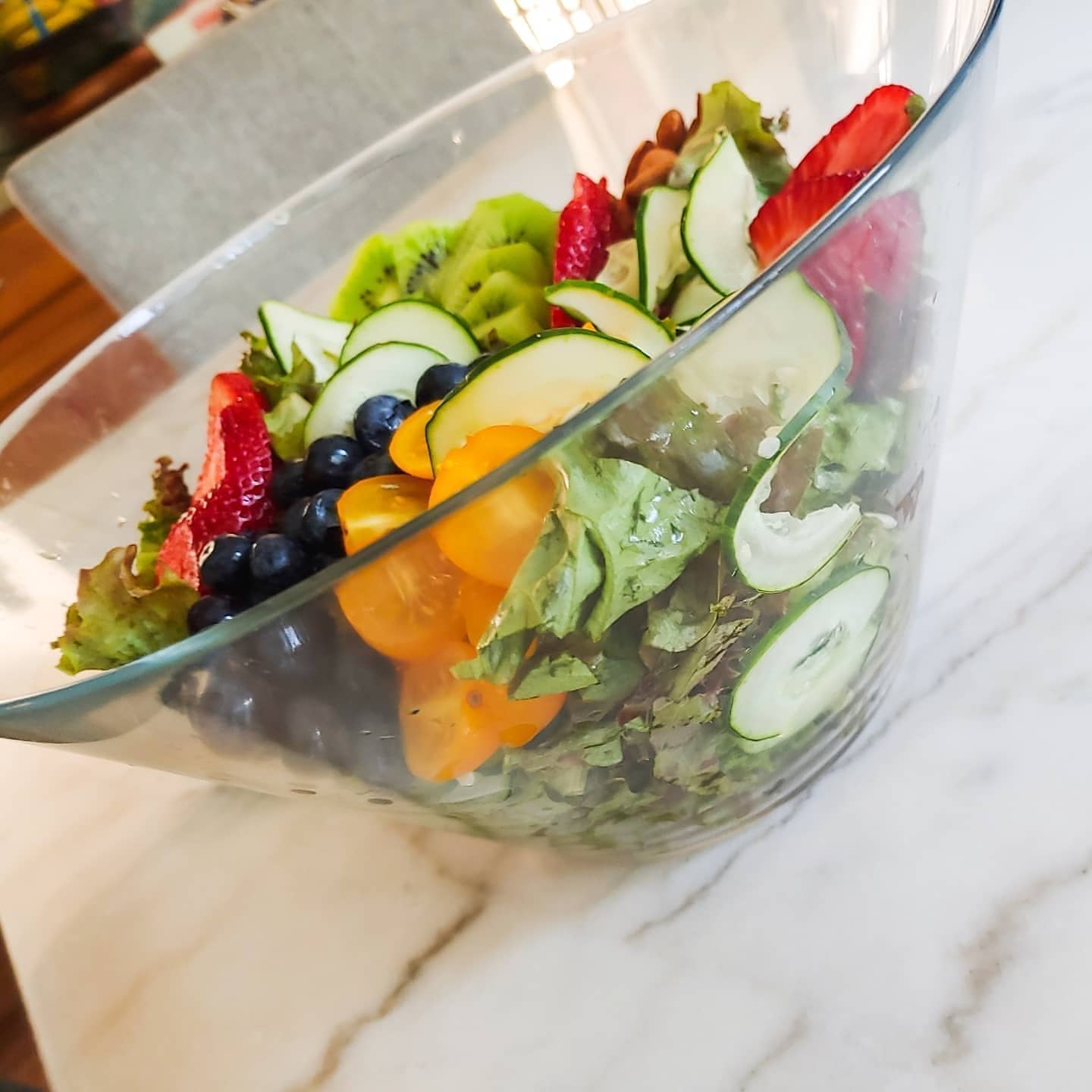
Freshly harvested red leaf lettuce as the base for a summer salad
The great thing about having a tiny garden is that:
- It’s manageable. You don’t get overwhelmed by the idea of having a bunch of plant babies to look after. If you’re just starting out, limited space can keep you from biting off more than you can chew. You also don’t have to water a huge yard. And, if it’s midsummer and you’re just getting started, the going will be easier with a smaller blueprint.
- The use of containers or raised beds, as opposed to planting directly in the ground, cuts down on weeds. I have ZERO weeds.
- Containers and raised beds also help to keep pests at a minimum, especially when they’re placed on a deck like mine which is eight feet off the ground. Sure, you might have the occasional band of squirrels who tenaciously scale your deck posts to descend upon your lone strawberry plant as soon as the few remaining berries on the plant become ripe…but hey, that’s entertainment!
- A container garden is portable. Need more or less sun? Want to get one plant away from that spot in your yard where the anthills keep coming back? Just move some pots around.
Container gardening does require particular attention to ensure proper drainage-moisture balance and nutrient content. You will need to do your research to figure out the needs of each plant you want to grow.
I personally like to consult YouTube university for many of my garden questions. There are so many experienced gardeners there willing to share valuable info, including one of my favorites, leadfarmer73.
You can also join a FaceBook group for gardening tips, seed sharing, and an all around good time. The ladies in the group Edible Gardening by Black Girls with Gardens are knowledgeable and hilarious!
If the idea of some light study and a little prep work didn’t scare you, let’s get into the five steps you can take to get your deck, patio, stoop, rooftop, porch, or any other kind of tiny garden up and running!
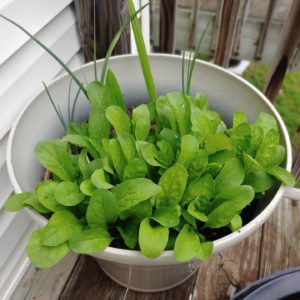
Fast growing arugula
5 Steps to Starting a Tiny Container Garden
1) Decide on your goal.
With food shortages and the need to stay active throughout the Spring 2020 stay-at-home orders in mind, I jumped into tiny gardening with the goal of growing about 75 percent of my green, leafy veggies for the summer.
Will you focus primarily on tomatoes and peppers, green veggies, medicinal herbs and edible flowers, a mix? It’s your call. Don’t be afraid to keep a garden journal and record your plan.
2) Grab your supplies!
Pots come in many shapes, sizes, and styles. You can grow from seed, or keep it simple like me and buy some of your plants as seedlings. Soil amendments are plentiful in stores or you can make your own. Garden tools can suit your fashion fancies.
Your neighborhood home and garden store is a playground, and it’s easy to get lost.
If you want a ready-made supply list, I have a great cheat sheet that you can grab for free here.
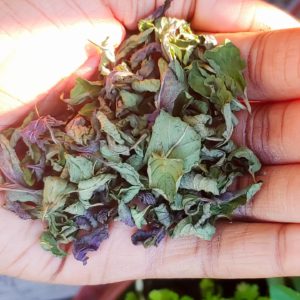

My first batch of mint tea from the deck garden was light and refreshing!
3) Consider staggering your plantings.
Things like greens and lettuce will try to grow seeds at some point during your summer growing period, and this will cause veggie growth to slow down a lot. I got about five good salads out of my plants over five weeks before they started growing seeds like crazy.
I’m still learning, so I was only able to get a few of them to stop seeding and start leafing again.
Looking back, I know now that as soon as those plants were robust, I should have planted additional seedlings which would have been ready by the time these were zonked out.
4) Dig in, and don’t forget to amend your soil.
I tend to be generous with compost and plant foods. You will want plant food that will provide continuous nutrients for at least 30 days, then be prepared to feed again.
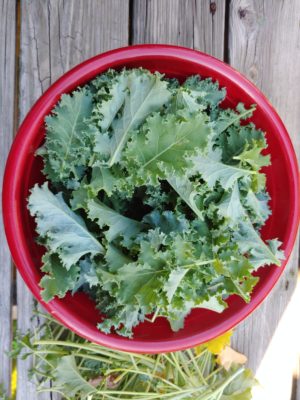
Organic kale, ready for sauteeing.
5) Water with care.
Everyday, I’m sure to water all my plants at dusk. This allows them to drink up throughout the evening and night hours without having to compete with the sun, which could evaporate too much of the water.
If it’s a really hot day or anything shows signs of needing more moisture, I add an additional watering at dawn, again, to avoid the high sun and heat of midday.
Now, if you really want to pat yourself on the back, and if it’s legal in your state, you can invest in a small rainwater collector or make one yourself.
Rainwater is much better for your plants than tap water because it is mostly free of manmade additives.
Never fear, though, if you don’t go that route. You can simply fill up your watering cans with tap water and let them sit out overnight so that the chlorine can evaporate before you hydrate your plants.
If I had to add one more step, it would be to keep your JoyWell full by having fun with your tiny garden. I love mine so much that it has become my sunrise meditation space every morning.
Remember that the prep work you put in won’t replace the TLC you give your garden as you align with nature to create something healthy, beautiful and delicious on a daily basis.
Before you know it, you’ll be sitting pretty in your mini Eden and putting food on the table as a bonus.
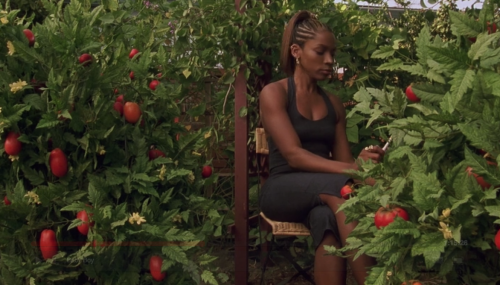
Juanita from Baby Boy was a garden magician! (Photo courtesy of iheartthatgirl.com)
About the Author

I’m an Inspirational Author using my creative passions to fuel your evolution. I believe that everything begins with a word, that words have the power to create and destroy, and that there is a time and a place for each of those actions.
This world is what we make it. So I do my part by using my creative interests to promote JoyWell, an idea of holistic wellness which involves the development of mind, body, spirit, and relationships.
Arts & crafts, fitness, health & beauty, travel, spirituality, and love—these are the topics which add the most spice to my life, and I don’t mind sprinkling a dash wherever I go.

